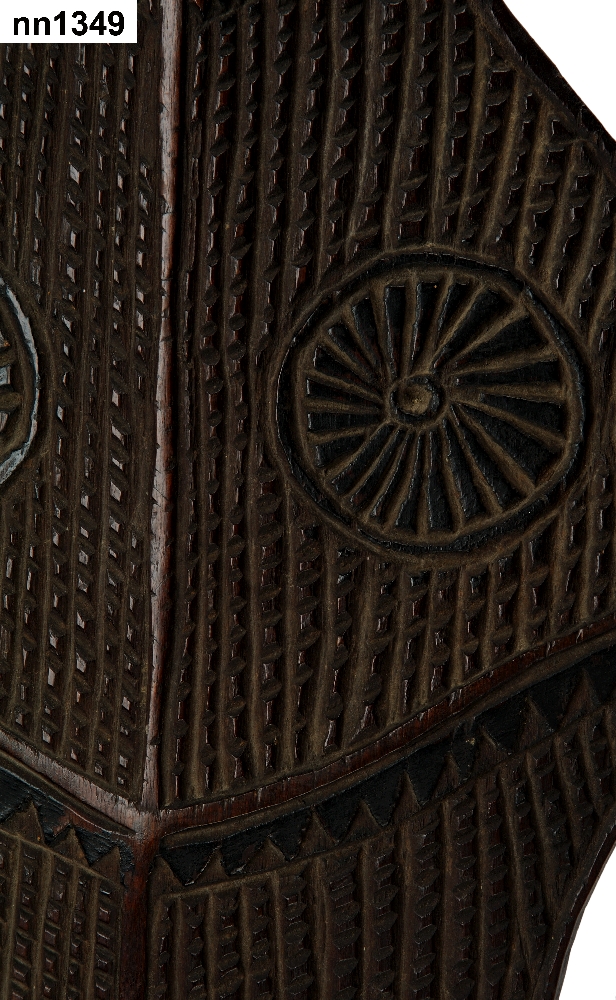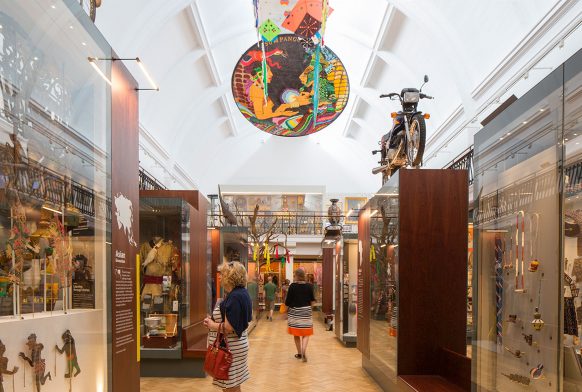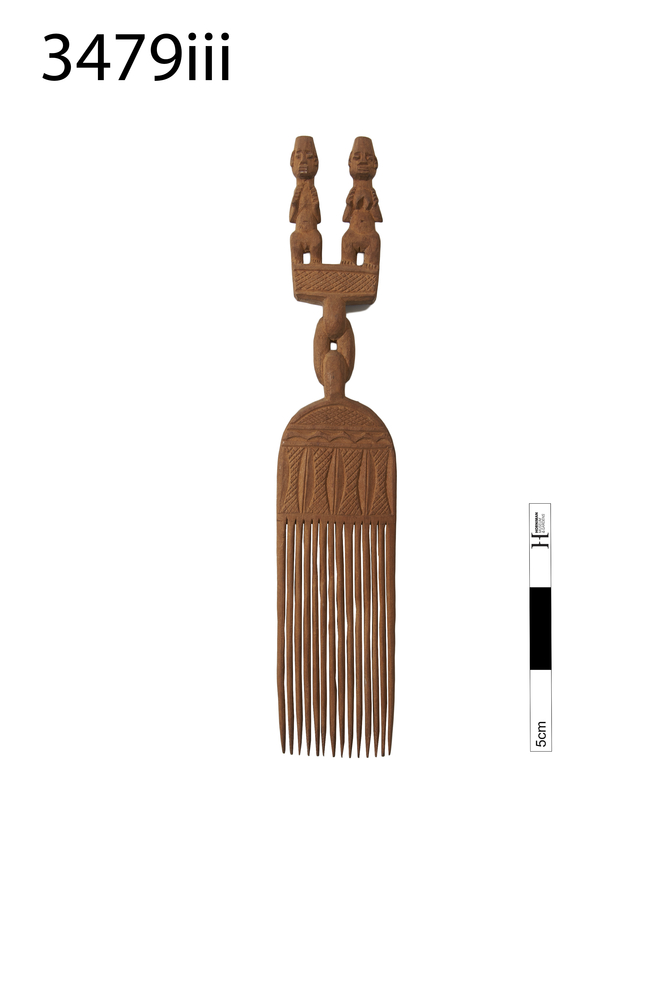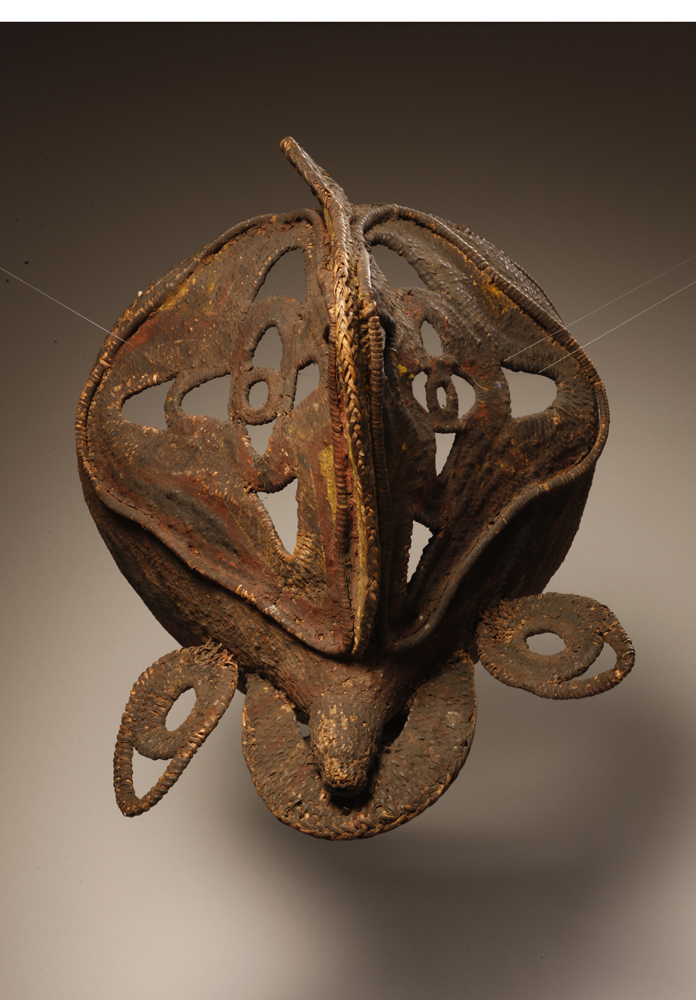


Large kite bladed paddle club of Clunie type 7E, decorated on the upper half with a pattern of cross hatched diamonds surrounding an inverted V of serrated piping and two eye motifs of concentric circles and radiating lines. This type were carried by chiefs and priests as insignia of their office.
Chiefly Club, Kinikini, Fiji, Western Polynesia Very broad, paddle-shaped clubs such as this kinikini were made only in Fiji, and in Tonga for a short period around the turn of the 19th Century. They required an enormous amount of effort to manufacture, as they were cut from a single block of hardwood, usually nokonoko (Casuarina equisetifolia, the Ironwood). This is a small, squat tree, and so an entire trunk might only supply planks suitable for carving one or two kinikini. This was never a very common club style, but their cultural importance was high: they acted as the insignia of chiefly men in several parts of eastern and southern Fiji, and were forbidden to commoners. Their function in this role was more than symbolic, however: on the battlefield, the kinikini served as both an easily visible standard for the chief’s forces, and as a shield against the volley of arrows and throwing clubs that flew as the opposing bodies of men closed for hand-to-hand combat. Like some club styles from other parts of the Pacific, kinikini often bear a pair of eye-like motifs engraved on each face (sometimes more than one). This expresses the fact that clubs were understood to become named, supernatural beings once they had distinguished themselves by killing in battle. Some clubs became the paths by which the gods or dead ancestors possessed traditional priests (bete) during religious rituals, or left their bodies afterwards. Kinikini became particularly associated with this role, and were therefore not only shields and standards on the battlefield, but also portable god-vessels. Wood. Mid-19th century. Provenance unknown.
fighting







